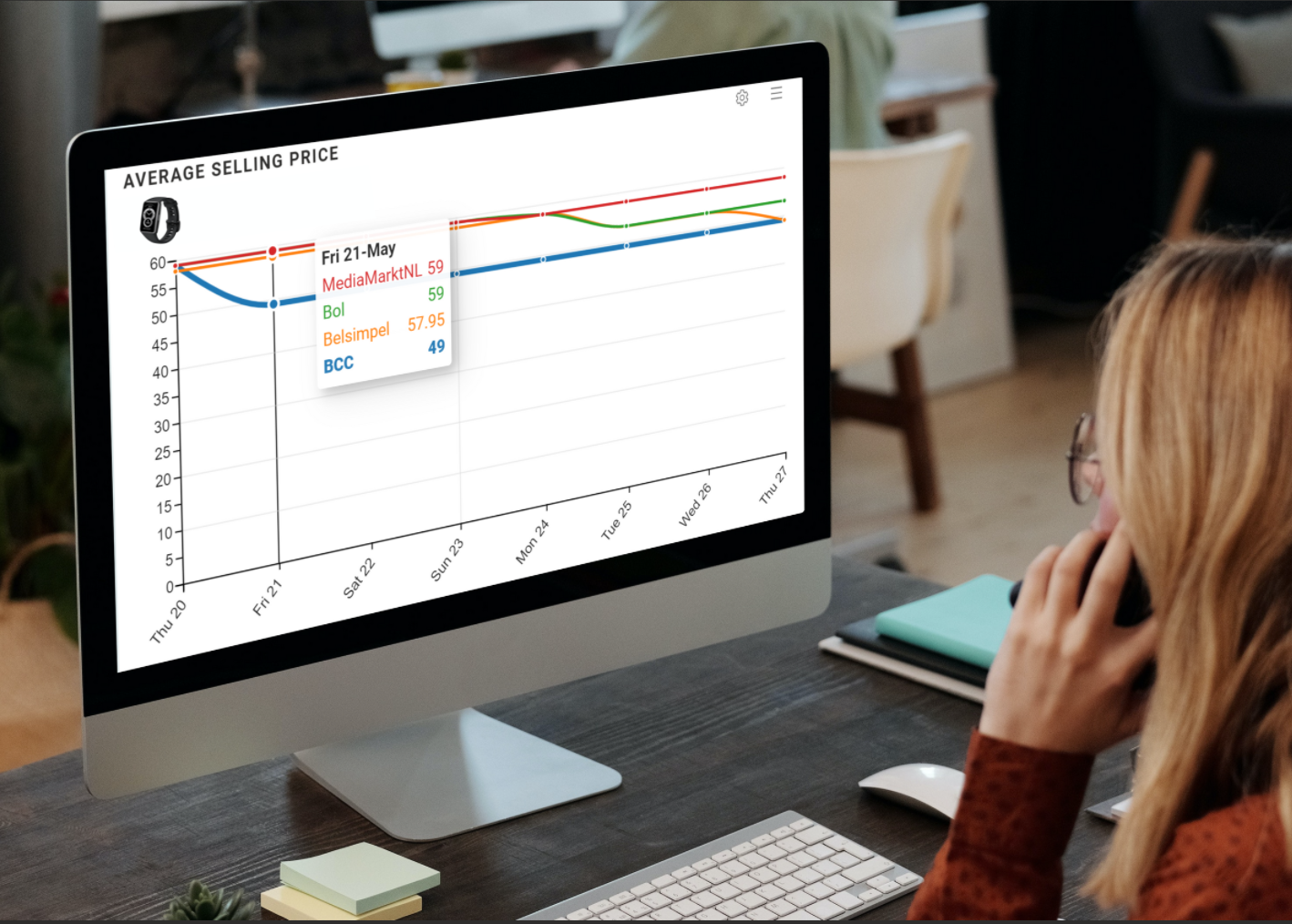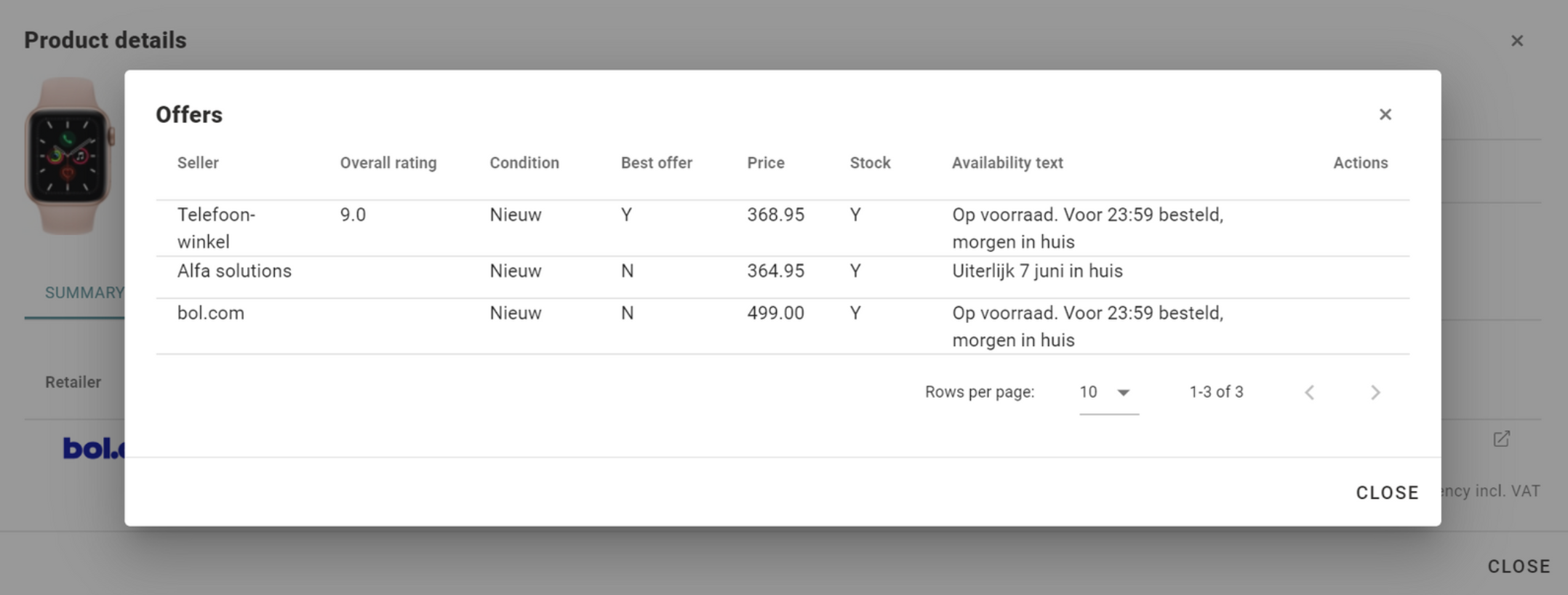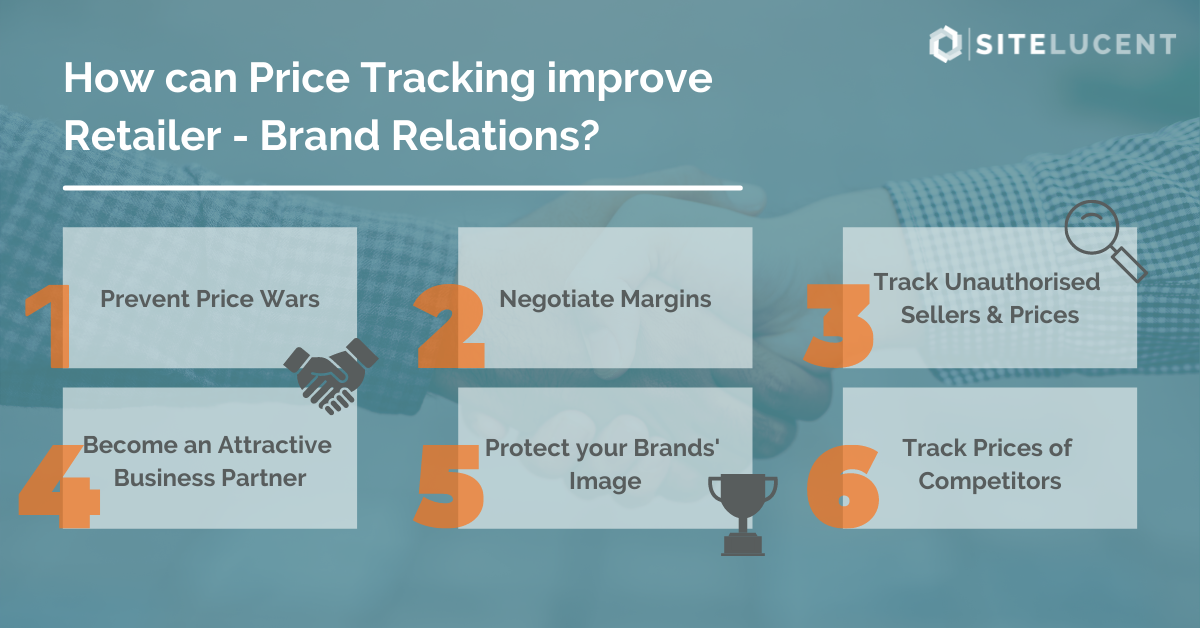In the competitive world of eCommerce, price tracking can give you more than simply gathering selling prices and their evolvement over time. Tracking the prices of your brands' products can help you keep strong relationships with key retail partners. How? Keep reading, and I'll explain!
You need retail partners to sell your products to consumers. When consumers are happy, your resellers will sell more, and your business will grow too. It may sound self-evident but, beware that a troubled relationship with retailers can quickly throw a spanner in the works. This blog will discuss how tracking prices can help you keep prices stable, build strong relationships with key retail partners, and ultimately make everyone in the chain do better!
Share this post on LinkedIn 
What is Price Tracking? 
Price tracking is the practice of tracking your products' prices and price movements and those of your competitors across all eCommerce channels.
Pricing data, gathered with price tracking software, can help you identify changes quickly and allow you to take appropriate action immediately. Price tracking also provides (historical) price trends and insights into your market to help you understand and anticipate market developments.
Collecting and analyzing eCommerce prices can be done manually, but that's a time-consuming task. Imagine visiting all pages where your products are listed, every week, every day, or even multiple times a day. I bet you can think of better ways to spend that time, such as focussing on your pricing strategy.
The process of automated product price tracking takes over this manual task. It will save you much time collecting daily updated prices from retailers, marketplace sellers, and competitors. Moreover, price tracker data is more accurate.
6 Ways Price Tracking Improves Retailer-Brand Relationship:
- Preventing Price Wars
- Negotiating Margins
- Tracking 3P Sellers & Prices
- Being an Attractive Business Partner
- Protecting your Brands' Image
- Monitoring Competitor Prices
1. Price Tracking to Prevent Price Wars
Retailer- and marketplaces repricing algorithms constantly monitor the prices of competing sellers and sites. Then they adjust prices in the hope of more sales. This way, a price war is set in motion, which puts margins and profitability at risk for you and your key resellers.

Communicate with resellers about your strategy, and create clear guidelines. Monitor all stakeholders' prices to keep prices stable and 'share the pie honestly'.
Price tracking contributes to stable prices by alerting you of sudden price drops. For instance, use price tracking software to set up alerts that warn you when prices drop and tell you who initiated it. Then quickly prevent others from adjusting their prices.
A price war on marketplaces can lead to losing product listings, becoming ineligible for advertising, and losing buy box placement and -eligibility. Resellers will very much appreciate it if you prevent all this from happening and protect their business.
You can read more on this topic in the article: How brands can avoid marketplaces price wars.
2. Price Information to Negotiate Margins
As a brand, you want to cover your costs, stay competitive, and ultimately make a profit. When discussing margins with resellers, you better be prepared.
To back you up in meetings, we recommend you analyze daily online selling prices of the previous three months. The product price evaluation of the past three months is not only beneficial for you as a brand to achieve the desired margins. Together with reseller sales figures, it shows what a shopper is willing to pay and what the shopper's perceived value is. Especially in a customer-value-based pricing strategy, this information is essential.
Price tracking data gives you and your resellers the insights you need to formulate a solid pricing strategy to make calculated decisions. That means you could both increase your prices and thus increase your margins if the opportunities are there!
Whatever you agree on with resellers, keep the following in mind: when the end-users are happy, demand is high, and sales are good. Never lose sight of who pays for your employees. By keeping that mindset in all you do – including your agreements with retailers and others in your distribution channel – you'll all have a common goal in mind.
Benefit all from price tracking insights to reach a pricing strategy that works for everyone, including the end consumer.
3. Track (Unauthorized) 3P Sellers & their Prices
3P sellers who have no official relationship with your company can play a significant role in price wars. They have no interest whatsoever in following your reseller pricing guidelines. If an unauthorized seller initiates a price drop, it forces retailers to match that price, even though that will decrease their margins.
The result: your key retail partners will lose sales profits and trust in your brand, and relationships get damaged.

As shown in the above image, price tracking software can inform you who is selling your products and where they are doing so. Get notified of unauthorized sellers, figure out who the seller is and how to reach them. If you take action against unauthorized sellers, you can prevent or stop a price war and maintain satisfied resellers and customers.
4. Be an Attractive Business Partner
It can become more challenging to attract new resellers when your products are online for a much lower price than the recommended retail price.
To attract new key retail partners, you have to protect your bottom line and your brand's health by using an automated product price tracker.
On the other hand, you can use price tracking tools to overview the number of retailers in a given territory selling your brands and their prices. By not letting too many retailers on a (saturated) market, you can avoid fierce price competition between them.
5. Protect your Brands' Image
Price tracking contributes to a solid and consistent brand image.
For instance, consumers can lose trust in your brand when they find the products they bought for a lower price somewhere else and could even return your products.
Or, imagine you are shopping for a new laptop. All laptops with the features of your choice cost around €800. Only one brand offers one for half the price. You might feel fortunate, but there is a chance you may feel like that price is too good to be true, and there must be a catch.
Price plays an important role in the buying decision, but other factors are at play. Shoppers evaluate a brand by the perceived value it offers. A shoppers' perception determines what they are willing to pay for your product.
Record low prices can change a persons' experience, affect real quality, confuse buyers, and diminish the perceived value of a product. When this happens, your brand or product will lose value to your resellers. After all, if the shopper no longer wants your products, why would your reseller want them?
Price tracking tools can tell you when your brands' prices drop and your brand reputation is in jeopardy. Daily updated pricing data allows you to take immediate action, protect your brand, and be an attractive partner for both resellers and consumers.
6. Competitor Price Tracking
As a brand, you need to understand how prices evolve in a competitive environment.
If competitors lower prices during the growth stage of your product's life cycle, you might need to drop your prices and adopt a competitive pricing strategy. During the decline stage, (competitor) price tracking can be helpful to decide if you want to discontinue the product or keep producing and selling it.
On the whole, you track competitors' prices to offer razor-sharp prices, which benefits your customers and, therefore, your resellers. With price tracking, you can decide on prices for new products that provide good value for money.
Let's wrap it up!

Ready to get started with price tracking?
